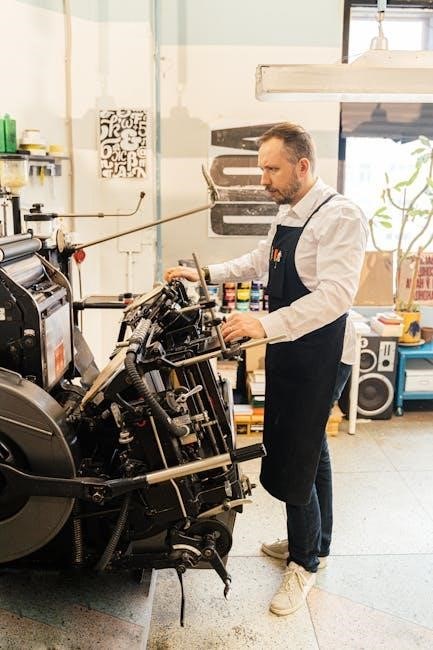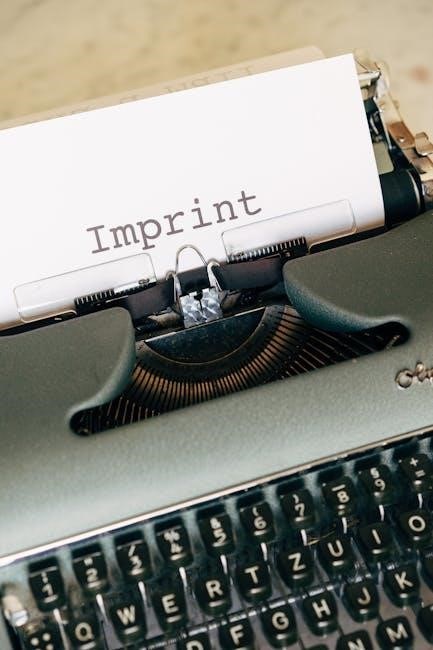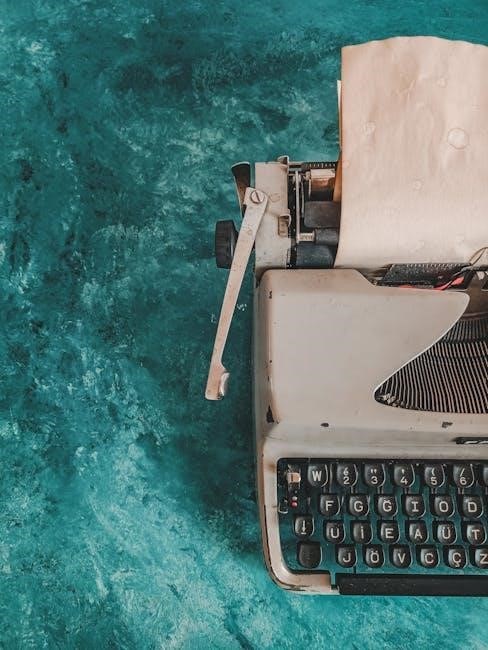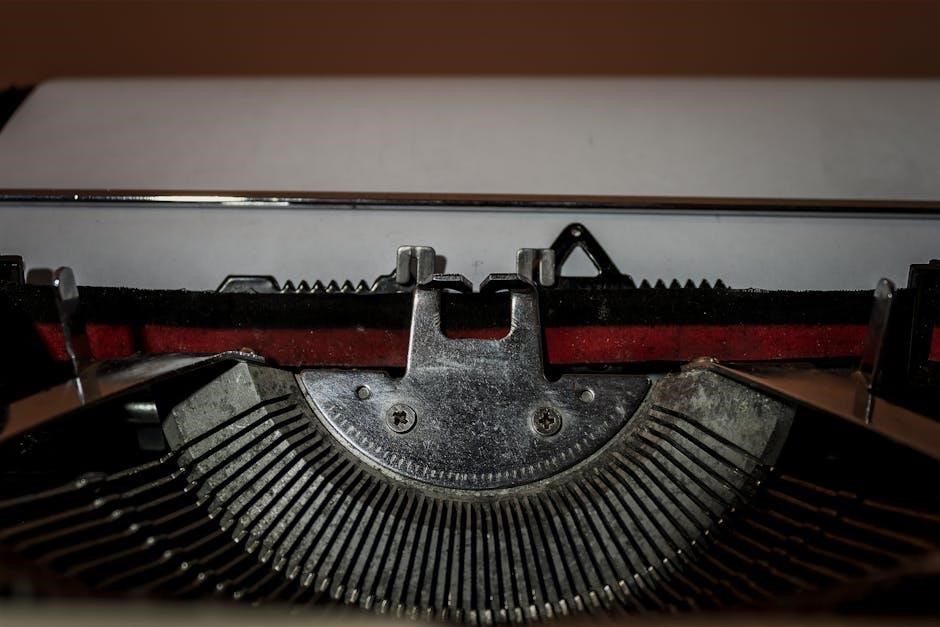Manual Printing Techniques: An Overview
Mankind has explored diverse reproduction techniques, striving for simplicity and efficiency. From block printing to screen printing and beyond, manual methods offer unique artistic control. These approaches contrast with automated systems, presenting distinct advantages.
Manual printing represents a spectrum of techniques where human skill directly influences the transfer of images onto various surfaces. Unlike automated processes relying on machinery, these methods emphasize hands-on involvement. Block printing, screen printing, and stencil applications exemplify this approach, each offering unique characteristics.
The beauty of manual printing lies in its ability to produce individualized, artistic results. Variations in pressure, ink application, and alignment contribute to one-of-a-kind prints. This contrasts with the consistent output of automated systems, where uniformity is prioritized.
Manual printing is not only a technical process but also an artistic endeavor. It allows for experimentation with textures, colors, and compositions, fostering creative expression. The tactile nature of these techniques appeals to artists and craftspeople seeking a direct connection with their work. Furthermore, manual printing is often more accessible, requiring less expensive equipment and resources compared to automated printing. This makes it a popular choice for small businesses, independent artists, and educational settings;

Core Manual Printing Techniques
Several manual printing techniques stand out, each with distinctive processes and aesthetic qualities. Block printing utilizes carved blocks, while screen printing employs stencils. Risograph printing is celebrated for its unique layered color effects.
Block Printing: Materials and Process
Block printing, a traditional hand-printing method, involves carving a design onto a block—typically wood, linoleum, or rubber. Essential materials include carving tools for precise detailing, block printing ink formulated for even coverage, and a brayer (roller) to evenly distribute ink across the block’s surface. High-quality paper is crucial for capturing the intricate details.
The process begins with transferring the desired design onto the block. Using carving tools, the areas around the design are carefully removed, leaving the raised design to receive ink. The brayer ensures a smooth, consistent layer of ink on the block. The inked block is then pressed firmly onto the paper, transferring the design.
Achieving a clean, crisp print requires even pressure and careful alignment. Variations in pressure can create unique textures and effects. Block printing allows for repeating patterns and custom designs, making it ideal for textiles, stationery, and fine art prints. The simplicity and hands-on nature of block printing provide a direct connection to the artistic process.
Screen Printing: A Detailed Guide
Screen printing is a manual technique employing a stencil to transfer ink onto a substrate. Key materials include a screen (typically mesh stretched over a frame), a squeegee for pushing ink, and specialized screen printing ink. The process involves creating a stencil, either manually or photographically, blocking off areas where ink isn’t desired.
The screen is placed over the substrate, and ink is applied to the screen’s surface. Using a squeegee, the ink is forced through the open areas of the stencil, transferring the design onto the substrate. Multiple screens can be used for multi-colored designs, requiring precise alignment.
Success in screen printing relies on consistent squeegee pressure and angle. Variations in ink thickness can be achieved by varying the number of passes. Screen printing is versatile, suitable for paper, fabric, and other materials. Its ability to produce durable, vibrant prints makes it popular for apparel, posters, and various promotional items. The manual nature allows for artistic expression and customization.
Risograph Printing: Unique Characteristics
Risograph printing, often called Riso, is a unique digital duplicating system bridging the gap between screen printing and photocopying. It employs a stencil-based process, where an image is burned onto a master sheet wrapped around a drum. As the drum rotates, ink is forced through the stencil onto the paper.
Riso printers use soy-based inks, offering vibrant colors and a distinctive aesthetic. One key characteristic is its imperfect registration, resulting in slight misalignments between colors, contributing to its charm. Each color requires a separate pass through the machine, allowing for layering and unique effects.
Risograph printing is known for its speed and cost-effectiveness for medium-volume runs. It’s popular among artists, designers, and independent publishers for creating posters, flyers, and zines. Its eco-friendly inks and distinctive aesthetic make it a favored choice for those seeking a handmade feel with digital efficiency. The process encourages experimentation, embracing imperfections as part of its unique character.
Other Notable Manual Printing Methods
Beyond core techniques, manual printing encompasses diverse methods. Stencil printing offers simplicity. Letterpress boasts historical significance, embedding artwork into paper. Monotype creates unique prints. Each technique provides distinct artistic possibilities for creative exploration.
Stencil Printing: Simplicity and Versatility
Stencil printing stands out due to its inherent simplicity and remarkable versatility. As a manual printing method, it involves using a stencil to apply ink onto a surface, creating a design. This technique is particularly appealing because it requires minimal equipment and is relatively easy to learn, making it accessible to beginners and experienced printers alike. The process begins with creating a stencil, which can be made from various materials such as paper, cardstock, or plastic.
Once the stencil is prepared, it is placed on the chosen surface, and ink is applied through the openings using a brush, roller, or spray. The versatility of stencil printing lies in its ability to be used on a wide range of materials, including paper, fabric, wood, and metal. This makes it suitable for diverse applications, from creating posters and t-shirts to decorating furniture and artwork.
Furthermore, stencil printing allows for intricate designs and can be easily adapted to produce multiple copies; Its ease of use and adaptability make it a popular choice for both artistic and practical purposes.
Letterpress Printing: Historical Significance
Letterpress printing holds immense historical significance as a cornerstone of the printing industry. Originating in the mid-1400s with Johannes Gutenberg’s invention of movable type, this technique revolutionized the dissemination of information and played a crucial role in the development of modern society. Letterpress involves using raised, inked surfaces to create an impression on paper, resulting in a tactile and visually appealing print. The process typically involves arranging individual pieces of type, often made of metal, into a frame to form the desired text or image.
The frame is then inked, and paper is pressed against it, transferring the ink to the paper and leaving a distinct impression. Letterpress printing was the primary method for producing books, newspapers, and other printed materials for centuries, shaping the course of history and culture. Its legacy continues to inspire and influence contemporary printing practices, with many artisans and designers embracing letterpress for its unique aesthetic qualities and connection to the past.
Monotype Printing: Creating Unique Prints
Monotype printing distinguishes itself from other printmaking techniques with its ability to produce one-of-a-kind images. As a planographic process, monotype involves creating an image on a smooth, non-absorbent surface, such as a metal or acrylic plate, using inks or paints. The artist then transfers the image to paper by pressing the two surfaces together, either manually or with a printing press. Because the image is created directly on the plate and transferred only once, each print is unique and cannot be replicated.
This allows for a high degree of spontaneity and experimentation, making monotype a favorite among artists seeking to explore textures, colors, and gestural marks. The resulting prints often possess a painterly quality, with soft edges and subtle variations in tone. Monotype printing offers a versatile medium for artists to explore their creativity and produce truly original works of art. Its unpredictable nature and emphasis on individual expression make it a captivating and rewarding printmaking technique.

Manual Printing vs. Automated Printing
Manual printing offers artistic control and unique results, contrasting with automated systems’ efficiency. While automation excels in speed and consistency, manual techniques provide nuanced color matching and distinctive textures, appealing to discerning consumers.
Color Matching Accuracy
Manual screen printing often boasts superior color results. Estimates suggest color matching can reach 80-90%, satisfying consumer demand. Unlike automated systems, manual techniques allow for adjustments during the printing process. This real-time control enables printers to fine-tune colors, ensuring they precisely match the desired outcome. Factors such as ink viscosity, squeegee pressure, and screen tension can be manipulated to achieve optimal color saturation and accuracy.
Skilled printers leverage their expertise to compensate for variations in ink batches or substrate properties. They can also create custom color blends on the fly, expanding the range of achievable hues. This level of precision is particularly valuable for projects where color fidelity is paramount, such as reproducing brand colors or creating fine art prints. The hands-on nature of manual printing provides a distinct advantage in achieving exacting color matches.

Tips for Successful Manual Printing
Practice different strokes and pressures on the machine. Experiment with squeegee angles to see how they affect prints. Skill, precision, and understanding of materials are key to achieving high-quality results.
Squeegee Technique in Screen Printing
Squeegee technique is paramount in screen printing, significantly impacting the final print quality. The angle, pressure, and speed at which the squeegee is drawn across the screen influence ink deposit and image clarity. A consistent angle ensures even ink distribution, while appropriate pressure forces the ink through the stencil.
Too much pressure can cause ink to bleed, resulting in blurred edges, while insufficient pressure may lead to incomplete ink transfer. The squeegee’s speed should be steady, avoiding sudden stops or starts that can create inconsistencies. Mastering this technique requires practice and attention to detail, allowing for precise control over the printing process.
Some printers advocate pulling the squeegee, while others prefer pushing, each method offering unique advantages. Experimentation is key to finding the optimal technique for different designs and materials. Regular maintenance of the squeegee blade is also crucial, as a sharp, clean edge ensures consistent ink flow.

Applications of Manual Printing
Manual printing serves diverse applications, including creating training materials and artistic prints; Its versatility extends to fabric decoration, poster production, and personalized stationery. The hands-on approach offers unique creative control and customization options.
Creating Training Materials
Manual printing techniques offer a cost-effective and customizable solution for producing training materials. Businesses can leverage these methods to create visually engaging and informative resources for employees. Block printing, screen printing, and stencil printing are particularly well-suited for generating manuals, workbooks, and visual aids. The hands-on nature of manual printing allows for easy adaptation and modification of content, ensuring that training materials remain relevant and up-to-date.
Furthermore, manual printing enables businesses to incorporate unique branding elements and design features into their training materials, enhancing the overall learning experience. The tactile quality of manually printed materials can also improve engagement and retention among trainees. By embracing manual printing, organizations can empower their workforce with high-quality, personalized training resources that foster skill development and knowledge acquisition. It is a tangible expression of value. The result is higher engagement.
Manual printing techniques, steeped in history and artistry, continue to hold relevance in today’s world. From the intricate details achievable through letterpress to the vibrant colors of screen printing, these methods offer a unique blend of craftsmanship and creative expression. While automated printing boasts speed and precision, manual approaches provide unparalleled control and customization.
Whether it’s creating bespoke stationery, producing limited-edition art prints, or developing engaging training materials, manual printing empowers individuals and businesses to make a lasting impression. The tactile nature of these prints, combined with the human touch involved in their creation, imbues them with a distinct character that resonates with audiences. As technology advances, the enduring appeal of manual printing serves as a reminder of the value of tradition, skill, and the beauty of imperfections. The charm is in the imperfections.